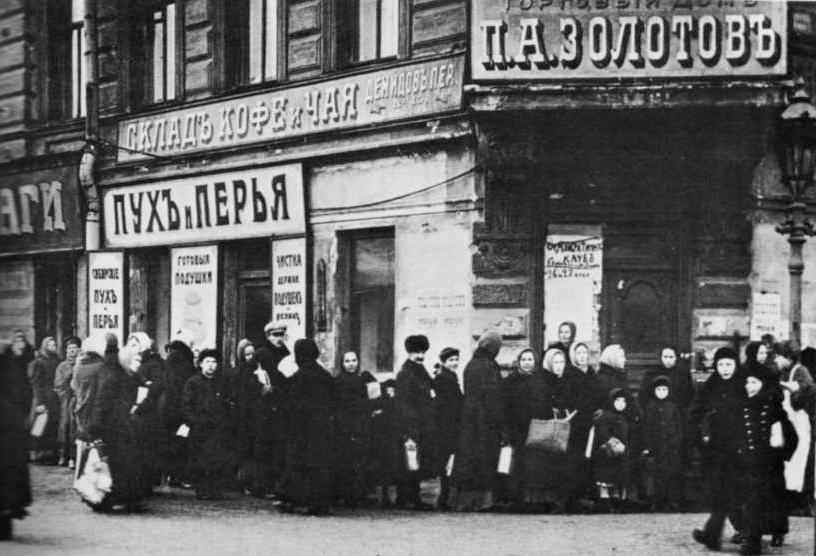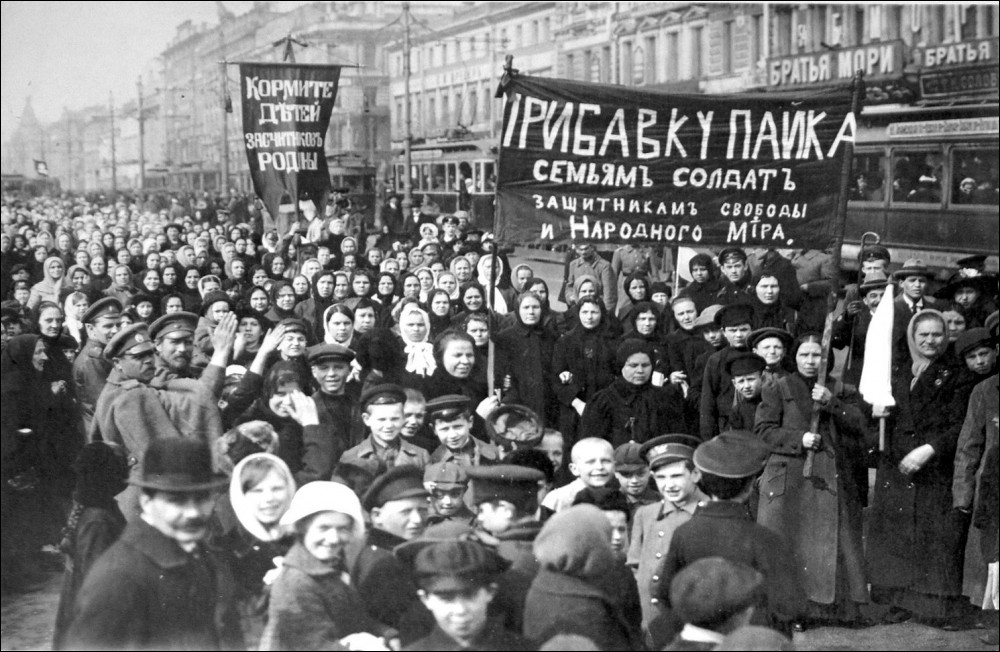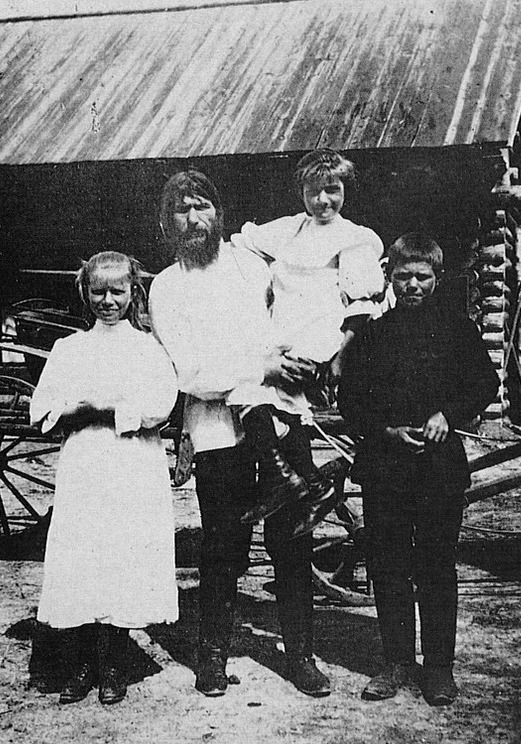We’ve fallen a little behind on our World War I series. Over the next few weeks/months, we’re going to work to get caught-up to the calendar.
It was well after midnight on December 29th, 1916, but the staff of the Yusupov Palace in St. Petersburg was preparing for a party.
The Palace’s wine cellar had been temporarily redecorated for their expectant visitor. Furniture and carpets had been moved in, along with a gramophone playing “Yankee Doodle” on a continuous loop. Several bottles of wine had been set aside for the occasion, in addition to a variety of sweet petit fours. The number of attendees were unknown – only a few key members of Russia’s nobility and their assistants would later amid to being present. The host, Prince Felix Yusupov, was attempting to entertain his guest of honor – Grigori Rasputin. Yusupov had sought out the supposed “mad monk” weeks earlier to attempt to learn some of the controversial holy man’s healing techniques.
What followed was a mixture of partial facts blended with mysticism and politically-motivated exaggeration. Popular legend states that Yusupov fed Rasputin treat after treat laced with potassium cyanide to no effect. Re-interpretation suggests that one of the night’s conspirators, a doctor, couldn’t violate his Hippocratic Oath to poison the famed mystic. Reality suggests the food was either never poisoned or was administered before being baked, evaporating the cyanide in the process.
After an hour, an exasperated Yusupov had tired of playing guitar and listening to an increasingly drunk Rasputin. The Prince would retrieve his gun and, according to his testimony years later, “a shudder swept over me; my arm grew rigid, I aimed at his heart and pulled the trigger.” Rasputin was seemingly dead – only to reanimate himself and stumble out the door where he kept moving despite four more shots. Only a following head shot supposedly slayed the infamous corruptor of the House of Romanov.
In reality, Yusupov’s first shot had passed through Rasputin’s mid-section without major damage. One of the Prince’s co-conspirators, politician Vladimir Purishkevich, had fired multiple times at Rasputin and connected only once – a bullet to his spine. The body was dumped in the Malaya Nevka River with such haste that one of Rasputin’s galoshes was stuck in the bars of the bridge. Unsure of how to react, the participants dismissed the police sent to investigate the gunshots heard at the Palace, only to re-invite them back to brag about killing Rasputin…all the while insisting the officers keep the incident quiet.
Grigori Rasputin had been an enigma in life – his role in Tsarist Russia a subject of heated debate then and now. In death, the man from the Siberian Plain would become a legendary indictment of Russia’s nobility and government in the First World War.

By the winter of 1916, St. Petersburg had become a national paradox – the seat of government for Tsarist Russia, yet a capitol increasingly void of political power.
Tsar Nicholas II had long since left the capitol for Moghilev, some 400 miles away, after appointing himself Commander-in-Chief following the Russian army’s rout in the summer of 1915. Left behind in St. Petersburg to manage the domestic affairs of state were Nicholas’ wife, the Tsarina Alexandra, and a deeply divided State Duma with little actual authority.
Neither the Tsarina nor the Duma held favor with the Russian peasantry, only a couple generations removed from serfdom, the growing borgeous or the Empire’s royal families. Alexandra had isolated herself since arriving in the country, due in part to a near total lack of understanding of Russian culture, and was viewed with suspicion given her Germanic roots (St. Petersburg’s name was changed to Petrograd after the start of the war to avoid sounding “too German”). Alexandra’s Russian relationships further deteriorated following the revelation that her son and Nicholas’ heir, Alexei, suffered from hemophilia. Increasingly protective of the boy, the Tsarina nearly completely withdrew from public life, as Russia’s nobility castigated her for literally weakening the Romanov’s blood line. Put in charge by her husband to govern in his absence, Alexandra turned to barbiturates in cope with the stress.

The State Duma wasn’t any more popular. Reduced to a glorified consultative body by the Tsar, the Duma had actively supported the war by passing war credits to help fund the conflict and had volunteered to self-dissolve. Even the supposed liberal members of the Duma actively aided the war effort. The Constitutional-Democratic Party, also known as the Cadets or “The People’s Freedom Party,” in theory consisted of some of the most radical-liberal Duma members. But motivated by the “Holy Alliance” between the “people and the State”, Cadets leadership helped form the Zemgor – a public/private coalition to provide charitable relief and boost war-time production.
Such unity in the Duma hid public frustration with the lack of meaningful reforms, and papered over the deep divisions in the body that had existed long before the war. As one Duma member put it:
“Everyone believes in victory and no-one believes in the government: yet nonetheless all settling of accounts with them is unconditionally set aside…. There is a time for everything. When the army returns from the trenches then we’ll deal with our Germans at home” (within the government).

The Russia that the Tsarina and the Duma were being asked to govern was on the verge of complete economic and societal collapse. By late 1916, dairy goods cost four-to-five times as much as they did in 1914. Flour and fuel supplies had evaporated between the demand for consumption and the breakdown of the nation’s railways – Russia had gone from 20,000 trains to 9,000 by 1917, the result of wear and tear. In February of 1917 alone, 1,200 trains lost their boilers to misuse, further reducing the available supply.
The war had actually interrupted one of the most robust periods of economic growth in Russian history. From 1905 to 1914, Russia’s GDP grew at a rate of 6% per year, driven largely by small, private industry. While the working conditions in St. Petersburg and other major cities was horrendous – a 1904 survey showed the average occupancy of a St. Petersburg apartment was 16 people – something approaching a Russian middle class was evolving.
The percentage of Russian laborers working in industrial jobs grew by 62% during the war, and with war-related industries consuming 94% of all Russian workers, the political leverage of the Russian working class had never been higher. Skilled laborers were at a premium, even moreso as the Russian army dipped into the cities to find draftees. Keeping such former labors within the ranks of the military was a more difficult task as by the end of 1916, an estimated 1.5 million Russian troops had already deserted.

The conditions on the front and back in the cities would only lead to a more politicized workforce. While the later half of 1914 only saw 41 strikes by 9,500 workers in St. Petersburg, 1916 would see almost 700 different strikes with over 620,000 workers participating. The “Holy Alliance” between the people and the government was coming undone.
Few probably ever cared about Grigori Yefimovich Novykh’s backstory before he arrived in St. Petersburg in 1904.
The facts of Novykh’s life remain shrouded in mystery, including his exact year of birth as differing accounts place it as 1869 or 1872. Known as a strannik, a religious wanderer, and a follower of the Khlyst sect of the Russian Orthodox Church which reportedly practiced orgies to attain divine grace, Novykh’s reputation for debauchery literally changed his name – Rasputin was similar to the Russian phrase for “debauched one.” How much these known “facts” are accurate are up to interpretation; Rasputin denied most of these accusations during his life.

Rasputin’s relationship with the Romanovs would begin in 1907 as a healer for the Tsesarevich Alexei after an life-threatening injury on account of the boy’s hemophilia. Rasputin cut-off contact for the boy from his doctors and prayed at the foot of his bed. He likely unintentionally saved Alexei’s life as his doctors had been prescribing aspirin, which acts as a blood-thinner. Following even more serious episode in 1912 – Alexei was administered last rites before Rasputin’s intervention – Rasputin became part of the Tsar’s court with Alexandra’s support.
St. Petersburg was initially taken with tales of the “mad monk.” Rasputin’s charm, coupled with his piercing eyes and intricate knowledge of scripture, made him a celebrity among Russia’s nobility. Tales of Rasputin’s sexual exploits, largely spread by his detractors, only served to increase his influence, with the tales becoming more and more outlandish and lurid. To this day, Rasputin’s supposed severed manhood is venerated by a small cult of Russian émigrés.
But it was the size of Rasputin’s influence over the royal family that generated the most scandal in St. Petersburg. While no one could prove Rasputin held any sway over Nicholas II, it was clear that the Tsarina was the one granting the “holy man” access to the halls of power. Despite a preponderance of evidence that Rasputin was drinking and carousing around St. Petersburg while bragging that his relationship with “the old woman” allowed him to do whatever he wanted, Nicholas II found himself unable to get rid of the Siberian mystic. As such, rumors followed that Rasputin had become Alexandra’s lover.

The scandal of Rasputin’s influence would probably have reached no further than the salons of St. Petersburg had it not been for Nicholas II’s decision to leave the capitol. Many of the Tsar’s ministers, terrified at the thought that Alexandra and Rasputin would effectively be put in charge of the government, tendered their resignations, believing in doing so it would communicate to the Tsar the level of disapproval St. Petersburg’s governing class had in the Tsarina. It backfired. The Tsar appointed a new Prime Minister. Outlining his legislative agenda, Prime Minister Boris Stürmer effectively deferred to the Tsar – there would be no talk of constitutional reform until the war was won. The shocked Duma members were left with little recourse. Despite fears of German influence stemming from his wife, Nicholas II had refused to accept any reforms, or limitations on his wife’s power, all the while appointing a German-surnamed Prime Minister.
Throughout 1916, criticism of Rasputin and the Tsarina escalated as ministers deemed to be political opponents were removed from power. One-by-one, the ministers who had fought against the Tsar taking over as Commander-in-Chief were replaced or otherwise minimized. In the 17 months of the “Tsarina’s rule”, from September 1915 to February 1917, Russia would have four Prime Ministers, five Ministers of the Interior, three Foreign Ministers, three War Ministers, three Ministers of Transport and four Ministers of Agriculture. Critics in the Duma decried the “ministerial leapfrog,” placing more and more of the blame on Rasputin.

But was Rasputin the culprit behind the consolidation of power behind the royal family, or was it Tsar Nicholas II? The interpretation of events at the time was that Nicholas II had lost touch with what was being done in his name back in St. Petersburg. There was definitely a degree of truth in the analysis – being at the front, the Tsar had little ability to appreciate domestic concerns – but considering Nicholas II called his allowance of a Constitution and Duma his “moment of weakness,” it would appear that Rasputin provided a worthy scapegoat for policies that the Tsar himself would have (or did) endorse.
By November, the situation had reached it’s boiling point. Rasputin and the Tsarina (mocked as “Rasputin and Rasputuiza”), were both attacked by name in the Duma. “Dark forces” had enveloped the government, with Cadet Duma member Pavel Milyukov asking of the government’s leadership: “Is this stupidity or is it treason?” For many, the answer was clearly the latter. Vladimir Purishkevich, one of the co-conspirators in Rasputin’s murder, spoke in the Duma accusing the Tsarina of governing the nation like it was her personal salon and that “an illiterate moujik shall govern Russia no longer!”
Discussions in the Duma began to take on a narrative – perhaps the Tsarina and Rasputin weren’t the only ones who needed to go…perhaps the Tsar did as well.

Alexandra demanded that in retaliation for the Duma speeches, more ministers be fired and the Duma itself be disbanded or at least dismissed for a few months. The Tsar’s brother, Grand Duke Michael Alexandrovich, attempted to warn Nicholas II about the condition of affairs back in St. Petersburg:
“The public hatred for certain people who allegedly are close to you and who are forming part of the present government has, to my amazement, brought together the right, the left and the moderate; and this hatred, along with the demands for changes are already openly expressed.”
If the Tsar appreciated the situation, he didn’t take any actions to forestall the brewing revolution. It might have already been too late.
The Tsarina’s reaction to Rasputin’s murder was simple – Yusupov and his conspirators should be immediately shot.

But with the conspirators consisting of members of the royal family (Yusupov had married into the Romanovs) and prominent politicians in the Duma, executions were out of the question. Some conspirators were shipped off to the front as punishment; Yusupov was banished to his estate until the February Revolution of 1917. None of them ever stood on trial for the murder.
Yusupov would enjoy a celebrity status for his role in Rasputin’s assassination in the West, penning several books. Rasputin’s daughter Maria would eventually sue Yusupov in 1928, claiming damages of $800,000. Despite Yusupov’s admission of guilt, the French court where the case was heard dismissed the suit – the crime had been committed in Russia and the French court claimed jurisdiction prevented the case from proceeding.
Leave a Reply
You must be logged in to post a comment.